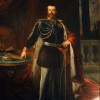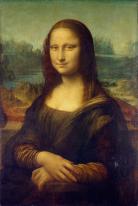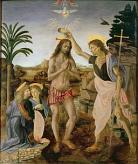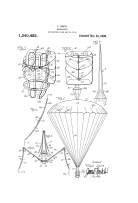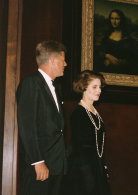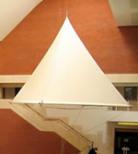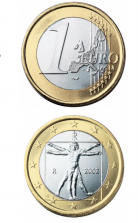Leonardo da Vinci and the Renaissance
Created by Dino Franco Felluga on Sat, 12/29/2018 - 20:24
Part of Group:
This timeline will support a 6-credit study-abroad program for Purdue's Honors College occurring in Paderno del Grappa, Florence and Venice over May 2019. It will be created by the 21 students joining Dino Franco Felluga in Italy for the course.
Timeline
Chronological table
| Date | Event | Created by | Associated Places | |
|---|---|---|---|---|
| 1 Feb 1861 |
Italy is united
ArticlesAlison Chapman, "On Il Risorgimento" Related ArticlesMarjorie Stone, “On the Post Office Espionage Scandal, 1844″ |
Dave Rettenmaier | ||
| circa. 1862 |
Gatling gun inventedAs the Civil War was coming into full swing and tensions were heating up between the North and the South, a game-changing mechanism came onto the scene. Invented in 1862, the Gatling gun was one of the first rapid fire weapons, using a hand crank and ten rotating barrels to deliver 500 rounds per minute to enemy troops. Developed by Richard Jordan Gatling, it was brought about by the development of the brass cartridge which had its own percussion cap, removing the need for a human to add the percussion cap before firing. It also played a serious role in the American conquest of the West over the American Indians. It was able to quickly slaughter massive amounts of Indians, as the United States pushed further and further west. In its design it somewhat resembled the rotating barrels of da Vinci’s machine gun, although da Vinci’s machine gun was based on small cannons rather than bullets. The Gatling gun was one of the first indications of the machine gun revolution of warfare that would come about in greater extents in the twentieth century with the invention and wide usage of the Maxim machine gun. Editors, History.com. “Gatling Gun.” History.com, A&E Television Networks, 4 Mar. 2010, www.history.com/topics/american-civil-war/gatling-gun. The Editors of Encyclopaedia Britannica. “Gatling Gun.” Encyclopædia Britannica, Encyclopædia Britannica, Inc., 14 Feb. 2017, www.britannica.com/technology/Gatling-gun. |
Ben Hardin | ||
| 1863 |
The Name "Helicopter" is CoinedIn 1863, French scholar and writer, Gustave de Ponton D'Amecourt, coined the name "helicopter" based off the Greek words "helikos" (helix) and "pteron" (wing). Ponton D'Amecourt had the privilege of studying mathematics, Sanskrit, Greek, and Latin. Gabriel de La Landelle and Ponton D'Amecourt worked together to create a steam boiler engine prototype made of aluminum, so he had a personal connection with helicopters in addition to creating the name. The coining of the name "helicopter" is important as it has not been altered since its initial formation, and it has made it easier for us to look back and locate information about helicopters now. Text sources: Bellis, M. (2019). History of the helicopter. Retrieved from https://www.thoughtco.com/history-of-the-helicopter-1991899. Ponton D'Amecourt, Gustave. (2013). Retrieved from https://www.europeana.eu/portal/en/record/2020801/dmglib_handler_biogr_24784004.html. Image Source: http://www.famille-damecourt.com/post/Gustave-Vicomte-de-Ponton-d’Amécourt-%281825-1888%292 |
Ali Jeffries | ||
| 2 Oct 1870 |
Rome annexed to ItalyPlebiscite annexes Rome and Latium to the Kingdom of Italy, 2 October 1870. This event marks the final phase of the unification of Italy. ArticlesAlison Chapman, "On Il Risorgimento" Related ArticlesMarjorie Stone, “On the Post Office Espionage Scandal, 1844″ |
Dave Rettenmaier | ||
| circa. 1884 |
Maxim machine gun inventedAs the Industrial Revolution dawned, new inventions were spring up, taking advantage of new manufacturing techniques. Along with this revolution came new military technologies. One such technology is the Maxim machine gun. Created in about 1884 by inventor and engineer Hiram Maxim, this gun drastically shaped the way wars were fought and the causalities that resulted. It was used by every major power during World War I. It was recoil-operated and had a water jacket around the barrel, which functioned as a way to cool the barrel since the heat from the high number of rounds being fired would otherwise warp the shape of the barrel. Firing at a rate of 500 bullets per minute, it drastically changed battle tactics. Men would have to dash and weave to avoid the spray of damage. Offensive lines could be easily crushed using the Maxim. Unlike the Gatling guns of the time, the Maxim was not hand-cranked and was less prone to becoming jammed. The effects of the Maxim machine gun were also psychological due to the large number of casualties it could cause in a short amount of time. In one incident where British used the Maxim against Matabele tribesmen, 1600 tribesmen were killed while only 4 British were killed. Several tribe leaders committed suicide after the event due to the trauma of the scene. When used in World War I, the effect was demoralizing as troops would watch their comrades immediately dropped by the powerful weapon. The Editors of Encyclopaedia Britannica. “Maxim Machine Gun.” Encyclopædia Britannica, Encyclopædia Britannica, Inc., 7 Sept. 2010, www.britannica.com/technology/Maxim-machine-gun. Huard, Paul Richard. “Maxim's Machine Gun Slaughtered Hundreds of Thousands of People.” Medium, War Is Boring, 5 Nov. 2014, medium.com/war-is-boring/maxims-machine-gun-slaughtered-hundreds-of-thousands-of-people-f9e068f5148. |
Ben Hardin | ||
| 1909 to 1944 |
Igor Sikorsky's Main Helicopter ContributionsIgor Sikorsky is considered to be the "father of helicopters" due to his major contributions that occurred between 1909 and 1944. His work began in 1909 when he created his first helicopter prototype that utilized a pair of rotors placed on the same axis that rotate in opposite directions; however, this model was unsuccessful. It wasn't until 1939 that Sikorsky made his first significant helicopter contribution. This was the year that he first tested his VS-300 helicopter, which was the first practical helicopter made in the U.S. This was also the first helicopter in the world to perfect the single main rotor and tail rotor that is seen in most helicopters today. By 1941, this helicopter was able to fly for slightly over 1 hour and achieved full cyclic-pitch. Sikorsky used his VS-300 design to help create the R-4 helicopter in 1942. By 1944, the R-4 became the first helicopter to ever be mass produced. The R-4 contained some similar properties as the VS-300 including a steel framework and fabric-covered fuselage. Some of the improvements found in the R-4 were a fully-enclosed cabin and dual controls for the two pilots. The invention of the R-4 was a very important step in accelerating the development of the modern helicopter. It also helped transform warfare and the notion of speed and movement as they were used by the United States and Great Britain during the end of World War II. Text Sources: Bellis, M. (2019). History of the helicopter. Retrieved from https://www.thoughtco.com/history-of-the-helicopter-1991899. Boyne, W. J. (2019). Helicopter. Retrieved from https://www.britannica.com/technology/helicopter. Johnston, S. P. (2019). Igor Sikorsky. Retrieved from https://www.britannica.com/biography/Igor-Sikorsky. Sikorsky R-4. (n.d.). Retrieved from http://www.aviastar.org/helicopters_eng/sik_r-4.php. VS-300 Helicopter. (n.d.). Retrieved from https://sikorskyarchives.com/VS-300_Helicopter.php. Image Source: https://www.indiatoday.in/education-today/gk-current-affairs/story/igor-... |
Ali Jeffries | ||
| 11 Aug 1911 |
The Mona Lisa is Stolen from the LouvreOn August 21, 1911, the Mona Lisa was stolen from the Louvre. The ensuing media frenzy was unparalleled for any sort of art theft, and the hysteria bred all sorts of conspiracy theories. One prominent theory was that it was stolen by rogue modernist artists, trying to destroy the old world order and imposing their own. This line of thinking actually led to the arrest of Pable Picasso as a suspect, but he was never convicted. The painting was actually stolen by Vincenzo Perugia, who had briefly worked at the Louvre. Wearing a worker's smock, he hid in the museum until after it had closed, took the painting out of the frame, and hid it in a closet. The next morning, he hid it under his smock, and walked right out with it. He kept it in a hidden compartment of a trunk in his house for the next two years. Britannica, The Editors of Encyclopaedia. “Mona Lisa.” Encyclopædia Britannica, Encyclopædia Britannica, Inc., 4 Apr. 2019, www.britannica.com/topic/Mona-Lisa-painting. |
Brendan Murphy | ||
| 1912 |
Introduction of the Tail RotorIn 1912, Boris Yuryev created a helicopter that contained, for the first time, a tail rotor in addition to a single main rotor. It is assumed Yuryev had a stronger understanding of aerodynamics than most inventors at the time as he was a pupil of a famous aerodynamicist, N. Ye. Zhukovskii. The introduction of the tail rotor was significant as it helped combat the torque from the main rotor. Based on Newton's third law of motion, if the main rotor is moving in a counterclockwise direction, then the fuselage (body of the helicopter) will move in a clockwise direction. The tail rotor prevents the helicopter from spinning in a circle and also helps improve directional control. After his tail rotor contribution, Yuryev continued to help improve the design of the helicopter. Yuryev was a leading researcher at the Central Aerohydrodynamic Institute (TsAGI) in Moscow for almost 30 years. His work specifically focused on the development of propellers and helicopters. By the end of his work, he was the Lieutenant-General of Aviation Engineering Sciences and was elected an Academician of the Academy of Sciences of the U.S.S.R. Text Sources: Soviet Helicopter. (1959). Retrieved from https://www.flightglobal.com/FlightPDFArchive/1959/1959%20-%200151.PDF. Valavanis, K. P. (2007). Advances in unmanned aerial vehicles: state of the art and the road to autonomy.Berlin: Springer. Image Source: https://vanhornaviation.com/products/206oh-58-tail-rotor-blades/ |
Ali Jeffries | ||
| circa. Nov 1913 |
Mona Lisa is RecoveredAfter keeping it in his house for 2 years, Perugia contacted a Florentine art dealer, hoping to sell the painting in Florence. After coming into contact, the dealer manged to convince Perugia to leave the painting with him, and called the police on him. He was arrested at his house half an hour later. His official reasoning was that he mistakenly believed that Napoleon had stolen it from the people of Italy. For the crime, he served a relatively light sentence of eight months. |
Brendan Murphy | ||
| 1919 to 2019 |
The "Baptism of Christ" moves to the Uffizi"The Baptism of Christ", originally commissioned by the monks of San Salvi in 1472, stayed at San Salvi until 1730. While at San Salvi, it survived the 1529 Siege of Florence in which half of the Church was destroyed. Today San Salvi houses a different famous painting, Andrea del Sarto's Last Supper. In 1730 'The Baptism of Christ' was taken to another monastery in Florence, the Santa Verdiana where it stayed for 80 years. In 1808, during Napoleons rule, he repurposed the monastery to become a slaughterhouse which resulted in the painting being moved again, this time to The Florentine Galleries. In 1919 the painting moved to its current home, the Uffizi, meaning this year is the 100th anniversary of the painting being at the Uffizi (and the 544th anniversary of the finishing of the painting). It is located in room 35 of the Uffizi Gallery, along with ‘The Annunciation’' another famous painting by Verrocchio and DaVinci. Sources: https://www.uffizi.it/en/artworks/verrocchio-leonardo-baptism-of-christ Image from Wikimedia: https://commons.wikimedia.org/wiki/File:Andrea_del_Verrocchio,_Leonardo_da_Vinci_-_Baptism_of_Christ_-_Uffizi.jpg
|
Cara McCormick | ||
| 18 May 1920 |
Modern Parachute is PatentedMultiple people throughout history, including Leonardo da Vinci, have designed parachutes. The modern parachute was not patented until 1920. This version included a ripcord, a folding parachute, and a harness. According to Google Patents, this was filed under patent number US1340423A. The inventor is listed as Floyd Smith. The patent has since expired, and this is a common framework for parachutes in use today. Sources: Image Source: |
Nicole Geer | ||
| 1927 to 1928 |
Crystal Oscillator - Quartz ClockThis modern clock uses an electronic oscillator controlled by a quartz crystal to keep time. Because of the very percise fequency of the crystal oscillator, these clocks are at least an order of magnitude more accurate than mechanical clocks. |
Eric Liu | ||
| circa. Nov 1962 to circa. Mar 1963 |
Mona Lisa Tours the USThe Mona Lisa went on a tour of the Us between November 1962 and March 1963. It was shown at the Metropolitan Museum of Art in New York and the National Gallery of Art in DC and was displayed for 1 week in each location. The week in the MET drew over 1 million visitors despite bad weather, and its time in DC brought 600 thousand visitors to the National Gallery of Art. This accounted for more than 50% of the normal yearly visitors to the DC museum. |
Brendan Murphy | ||
| 16 Jul 1969 |
The Moon LandingAlmost 500 years after da Vinci's death, July 1969, Neil Armstrong became the first man to walk on the moon. This scientific marvel would have stunned even a genius such as da Vinci. Despite his numerous inventions and insights on the moon, among other subjects, he lived in a time were mirrors were the newest technology, therefore, something as major as walking on the moon would have seemed like a myth. Works Cited: Dunbar, B. (2015, February 19). July 20, 1969: One Giant Leap For Mankind. Retrieved from https://www.nasa.gov/mission_pages/apollo/apollo11.html |
Corinne Evans | ||
| 1970 to 2001 |
da Vinci inspires modern works in mathematics and artAlthough da Vinci’s geometric sketches did not cause radical changes in mathematics, modern mathematicians and artists alike take inspiration from his geometric figures and interest in the transformation of shapes. George Hart is a professor recently retired from SUNY Stony Brook whose research was heavily inspired by da Vinci’s polyhedra sketches; by integrating the fields of math, computer science, and art he developed a computer program that synthesized new hybrid polyhedra. Likewise, several artists have been inspired by da Vinci’s thoughts on the transition of shapes. For example, sculptor Charles Perry created structures that depict abstract shapes underdoing transformation. Sources Shearer, Rhonda Roland. “Chaos Theory and Fractal Geometry: Their Potential Impact on the Future of Art.” Leonardo, vol. 25, no. 2, 1992, pp. 143–152., doi:10.2307/1575702. Perry, Charles O. “On the Edge of Science: The Role of the Artists Intuition in Science.” Leonardo, vol. 25, no. 3/4, 1992, pp. 249–252., doi:10.2307/1575845. Peterson, Ivars. “Polyhedron Man.” Science News, vol. 160, no. 25/26, 2001, pp. 396–398., doi:10.2307/4012851. The image is taken from the following article "Polyhedron Man" that is listed above. |
Garrett Mulcahy | ||
| 1977 |
Restoration and Current State of the Last SupperWith a painting that was subject to so much damage yet by such a renowned artist as da Vinci, it is not surprising that many restorations have been attempted. More than six were attempted between 1700 and 1900, with the most recent and extensive taking place in 1977. Before this attempt, prior restorations usually painted over da Vinci’s work, but this resulted in a buildup of paint and distortion of the figures and details. In 1977, Milan decided to use modern technology such as microscopic photographs, core samples, infrared reflectoscopy, and sonar to remove added layers of paint and reveal da Vinci’s original work. This restoration took more than 38,000 hours and resulted in a painting where 42.5% of da Vinci’s work has been preserved. In the Last Supper today, one can see that the tiny paint flakes that have chipped off throughout the entire painting sadly make it appear extremely faded and blurry. While historians desperately want to prevent any future damage to da Vinci’s masterpiece, they also understand the cultural importance of it being open for viewing, instead of paranoidly hidden away – after all, art is meant to be seen. Today, travelers in Milan can go to Santa Maria delle Grazie to see The Last Supper, albeit with some restrictions – visitors can only remain in front of the painting for 15 minutes, and a maximum of 30 people are allowed into the refectory at a time to minimize overcrowding. Visitors must pass through an air-lock system that helps purify them and keep pollution from reaching the painting, and air quality monitors and air filters are also installed to monitor the painting. da Vinci’s great painting reveals his personality of constantly trying to discover new ideas and experimenting in all areas of life, yet the fact remains that he was only human and of course failed occasionally. His painting was “innovative in its heart and too innovative in its methods. The conception was brilliant but the execution flawed” (Issacson p. 292). The remains of The Last Supper exemplify Renaissance painting principles and show how da Vinci’s mastery of these techniques allowed him to go beyond the limits of art to create movement, emotion, and realism. Sources: Harris, B. & Zucker, S. (n.d.) The Last Supper. Retrieved from https://www.khanacademy.org/humanities/ap-art-history/early-europe-and-colonial-americas/renaissance-art-europe-ap/a/leonardo-last-supper The Last Supper – by Leonardo da Vinci. (2011). Retrieved from https://www.leonardodavinci.net/the-last-supper.jsp Image Source: Da Vinci, L. (1498) The Last Supper. [Painting] Retrieved from https://en.wikipedia.org/wiki/The_Last_Supper_(Leonardo) |
Leila Yanni | ||
| 26 Jun 2000 |
First Test of a da Vinci ParachuteAdrian Nicholas was a British skydiver. As Leonardo da Vinci's design for the parachute was never tested, Nicholas wanted to confirm the theory. Katarina Ollikainen (his girlfriend) constructed a prototype based off of Leonardo da Vinci's sketch, even utilizing only period accurate tools and materials. The parachute was in the shape of a 24 ft by 24 ft square-based pyramid. The four sides were to be covered in sealed linen. Against the skeptisism from experts, Nicholas attempted the jump from a hot-air balloon at almost 10,000 feet. The only fear was with the landing, with the concern that the 187 pound device would crush him. Because of this, he allowed himself to fall with da Vinci's parachute until he reached about 2000 feet, then cut himself free and deployed a modern parachute for the landing. He commented that the da Vinci device had a smoother ride than modern day parachutes. Also interesting: after being thrown away, the device floated to the ground, only sustaining minor damages on impact. A quote from Nicholas was "It took one of the greatest minds who ever lived to design it, but it took 500 years to find a man with a brain small enough to actually go and fly it." Sources and Image Source: |
Nicole Geer | ||
| The end of the month Nov 2001 |
Vebjørn Sand Engineers da Vinci Bridge in Ås, NorwayVebjørn Sand, a contemporary Norwegian artist, became interested in da Vinci’s designs for a self-supporting arched bridge in 1996. Through a partnership with the Norwegian Public Roads Administration (NPRA), Sand was able to build a da Vinci bridge for pedestrians and bikers crossing Highway E18 in the municipality of Ås, Norway. This was possible only because of the NPRA’s historic receptiveness to projects that combine art with functionality in public space. The design is slightly modified; while da Vinci’s original design only had one parabola, the bridge in Ås is supported by three parabolic arches. The parabolic structures are suited to this design by distributing weight to the wide metal pillar abutments at the base. The bridge is made of laminated wood reinforced with steel, rather than the stone that da Vinci had originally proposed. Construction of the 330 foot long bridge by the Moelven Group lasted approximately 5 years, from 1996 to 2001. The bridge was opened to the public in November of 2001 by Queen Sonja of Norway. Sources: Atalay, B. (2013, February 3). LEONARDO’S BRIDGE: Part 3. “Vebjørn Sand and Variations on a Theme by Leonardo”. Retrieved May 13, 2019, from https://blog.nationalgeographic.org/2013/02/03/leonardos-bridge-part-3-vebjrn-sand-and-variations-on-a-theme-by-leonardo/ Nash, E. P. (2001, December 9). TRAVEL ADVISORY; After 500 Years, Leonardo Gets His Bridge. The New York Times. Retrieved May 13, 2019, from https://www.nytimes.com/2001/12/09/travel/travel-advisory-after-500-year... Skari, Bent, ed. (2010). Statens vegvesen: Akershus 1990–2000 (PDF). Oslo, Norway: Statens vegvesen. p. 214. ISBN 82-994614-2-1. Retrieved 22 November 2016. [Vebjørn Sand Da Vinci Project Bottom View]. (2015, December 4). Retrieved May 12, 2019, from https://www.dezeen.com/2015/12/04/a-z-advent-calendar-leonardo-da-vinci-bridge-vebjorn-sand-nygardskrysset-norway/ Photo is taken from the Dezeen article, cited above. The photo was obtained using the image search website Broer, which searches for open source photos. |
Katherine Li | ||
| Dec 2001 |
Vebjørn Sand da Vinci BridgeBetween 1997 and 2001, Norwegian painter and artist Vebjørn Sand formed a partnership with the Norwegian Public Roads Administration to build what became known as the Vebjørn Sand da Vinci Bridge. Based on Leonardo da Vinci's arched bridge design originally intended for the Golden Horn of present day Istanbul, Sand's pedestrian bridge was built over European route E18 in Ås, Norway. The Vebjørn Sand da Vinci Bridge is smaller version of da Vinci's parabolic arch design which used a wider base to more effectively distribute force, a principle which da Vinci discovered centuries before its common use. This bridge also launched the Oslo Leonardo Bridge Project. The project aims to build da Vinci footbridges all around the world using local resources, and Sand hopes to use the bridge as "a logo for all nations" according to the Wall Street Journal. Sources: Morris, Jan. “Spanning Past and Present.” The Wall Street Journal, Dow Jones & Company, 5 Nov. 2005, www.wsj.com/articles/SB113113585415688626. Nash, Eric P. “After 500 Years, Leonardo Gets His Bridge.” New York Times, vol. 151, no. 51962, 2001, p. 3. Wikimedia Foundation. “Vebjørn Sand Da Vinci Project.” Wikipedia, Wikimedia Foundation, 31 Jan. 2018, en.wikipedia.org/wiki/Vebj%C3%B8rn_Sand_Da_Vinci_Project. This image by Åsmund Ødegård (Flickr) is licensed under the Creative Commons Attribution-Share Alike 2.0 Generic license (https://creativecommons.org/licenses/by-sa/2.0), via Wikimedia Commons. https://commons.wikimedia.org/wiki/File%3ADa_Vinci_Bridge.jpg |
Emily Maneke | ||
| 1 Jan 2002 |
Italy Releases "Vitruvian Man" EurosIn 2002, Italy released a set of Euros to establish a new national currency. Leonardo's "Vitruvian Man" is the subject for the 1 Euro coin. The "Vitruvian Man" coin displays a sense of Italian pride in da Vinci. It also alludes to the fact that the Renaissance occured in Italy. The 1 Euro Coin was voted "Most Beautiful" in the collection. The beauty of the "Vitruvian Man" is still evident in today's culture. Source: Photo Source: https://colnect.com/en/coins/coin/7540-1_Euro_Vitruvian_Man_-_drawing_by... |
Alexa Lahey | ||
| 28 Jun 2003 |
Lupu Bridge Opens to PublicWhile Leonardo da Vinci’s bridge design has never been implemented on the scale he imagined, key concepts in his design live on in many modern-day architectural marvels, including the Sydney Harbor Bridge and the Lupu Bridge pictured here. The Lupu Bridge in Shanghai, opened in 2003, spans the Huangpu River. It is built with a tied-arch design, meaning that both ends are “tied” by the deck, which lessens the horizontal force of the arches on the bases. The bridge is also a through arch bridge, meaning that some of the arch was below the deck, while the rest of the arch is above the deck. The parabolic shape, as proposed by da Vinci in his notebook, remains especially advantageous because it equally distributes weight along the entire length. With the tied deck, this allows for the bridge to support enormous amounts of weight even in non-ideal ground conditions, such as the soft soil in Shanghai. Besides facilitating transportation, the bridge also serves as a tourist attraction; visitors can climb to the top of the arch for panoramic views of the city. Sources: Atalay, B. (2013, February 3). LEONARDO’S BRIDGE: Part 3. “Vebjørn Sand and Variations on a Theme by Leonardo”. Retrieved May 13, 2019, from https://blog.nationalgeographic.org/2013/02/03/leonardos-bridge-part-3-vebjrn-sand-and-variations-on-a-theme-by-leonardo/ [Bridge of Lupu over the Huangpu river in Shanghai (China)]. (2012, August 5). Retrieved May 15, 2019, from https://commons.wikimedia.org/wiki/File:Lupu_Bridge,_Huangpu_River.JPG The Lupu Bridge, Shanghai, China. (n.d.). Retrieved May 15, 2019, from https://www.iabse.org/IABSE/association/Award_files/Outstanding_Structure_Award/The_Lupu_Bridge__Shanghai__China.aspx Tied-Arch Bridge Facts, History, and Examples. (2019). Retrieved May 15, 2019, from http://www.historyofbridges.com/facts-about-bridges/tied-arch-bridge/ |
Katherine Li | ||
| Apr 2008 |
Paracute Design by da Vinci LandedAfter the successful jump by Adrian Nicholas of a parachute based on da Vinci's sketch, the natural next step is a successful landing with the device. Oliver Vietti-Teppa set out to achieve this. His version of the device was of the same four triangular-sided pyramid shape. Each side was an equilateral triangle that was about 23 feet long. It also did not have a wooden frame, as he was worried about the complications from the extra weight. He utilized a modern fabric to improve upon the Nicholas version. He began in a helicopter hovering over 2000 feet in the air. He wore a modern chute as a back-up, but he was able to land safely without it. He was credited as the first successful landing of a parachute mimicking da Vinci's design. Sources and Image Source: |
Nicole Geer | ||
| 2009 to 2012 |
The Only Modern Viola Organista is ConstructedIn 2009, Pole Slawomir Zubryzycki begins work on the first known viola organista based directly on da Vinci’s designs. Zubryzycki synthesized this design with the descriptions of Michael Praetorius, a sixteenth century German organist. Praetorius released a series of volumes under the title Syntagma Musicum, where he illustrated and described various musical instruments from the time, including the Geigenwerk made by Hans Heyden. Zubryzycki was also inspired by the viola de gamba contained in the drawings, a seven-stringed chordophone similar in appearance to the cello. The goal was to create an instrument that was mechanically similar to da Vinci’s organista, with the timbre of the viola de gamba. In 2012, the instrument was completed. Zubryzycki would perform on the organista for the first time on October 18th, 2013, at the International Royal Cracow Piano Festival, in his hometown. The next three years were spent touring the instrument in seventeen countries. During this time, he would record a solo album entitled “Viola Organista – The da Vinci Sound,” released in 2015. Zubryzycki, S. (2015). Reconstruction. Retrieved from http://www.violaorganista.com/en/about/reconstruction/ Jobson, C. (2013, November 18). Polish Concert Pianist Builds a 'Viola Organista' Based on a 500-Year-Old Leonardo Da Vinci Sketch. Retrieved from https://www.thisiscolossal.com/2013/11/viola-organista/ |
Christopher Embry | ||
| 2015 to 2015 |
Vulnciura Strings Features the Viola OrganistaIcelandic singer Bjork releases her eighth studio album in 2015, entitled Vulnicura. Combining electronic music and EDM with robust string orchestration, the album was well-reviewed by critics. In October of that year, she would announce Vulnicura Strings (fully titled “Vulnicura: The Acoustic Version – Strings, Voice and Viola Organista Only"), with reworked instrumentation that kept only the vocal recordings of the original pieces. In a statement, Bjork said her goal was to “simply have the acoustics stand on their own for the folks who wanna (sic) indulge even further into the wooden timeless side of this music. With no techno." Bjork had emailed Zubryzycki in 2013 soon after his organista was completed, but did not have an opportunity to call upon the instrument until the Vulnicura Strings project. The two did not meet in-person throughout the recording process, as Zubryzycki recorded his parts in Cracow. Bjork would send him flowers several days later in return. The organista is featured most prominently on the track “Black Lake,” where it is the only accompaniment to Bjork’s vocals. She stated that performing the song was “always like going back to the Middle Ages. So I thought, OK, this is a little ancient song that would probably have a good relationship with the Viola Organista." Gzyl, P. (2015, October 13). Krakowianin zagra razem z Björk. Retrieved from https://gazetakrakowska.pl/krakowianin-zagra-razem-z-bjork/ar/8990187?cookie=1 Bjork: Vulnicura Strings, Available For Pre-Order. (2015, October 06). Retrieved from http://www.indian.co.uk/site/news/bjrk-vulnicura-strings-available-for-p... |
Christopher Embry |

